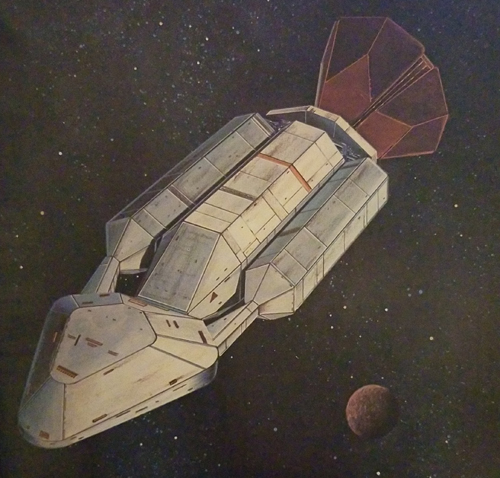Cochrane class (21st Century) (FASA)
From Trekipedia
Earth's first warp capable ship, the Cochrane class entered service in 2058, and proved to be the remarkable craft its designers had hoped it would be. After nearly a decade of design, construction, and testing, the Cochrane class, named for the inventor of the warp drive engine, Zefram Cochrane, inaugurated a new era in space exploration. Inaccessible interstellar spans became reasonable distances, as demonstrated by the U.N.S.S. Bonaventure's journey to Tau Ceti in 2061, nearly 12 light years away. The class used fusion engines to generate the warp field effect, and featured a detachable life support section in case of a warp engine emergency. The class was retired from service in 2077.[1]
Specifications
| Length | 206m Overall Life Support Section 63.48m Engine Section 85.2m Heat Radiator Wings 42.8m |
| Beam | 63.4m Overall Life Support Section 57.3m Engine Section 20m diameter Heat Radiator Wings 66.7m |
| Draught | 66.7m Overall Life Support Section 33.3m |
| Mass | 19.4 million kg |
| Complement | 45 5 Officers 40 Crew |
| Navigation | Warp Celestial Guidance |
| Communication | Laser Radiotelemetry |
| Computer | Intermediate Independent Thought Memory Scan |
| Weapons | 2 forward lasers |
Performance
| Range | Standard 25 light years Maximum 40 light years |
| Velocity | Cruising Warp 2 (8c) Maximum Warp 2.5 (15.6c) |
| Voyage Duration | Typical 3.8 years (Sol-Tau Ceti) Maximum 6 years |
| Life Support | Gravity .4-1.0g Atmosphere 20% O2, 11% humidity |
| Sustenance Duration | 4.5 years at Standard Ship's Complement |
Notes and References
- ↑ Goldstein, Stan et al (Authors). Spaceflight Chronology. Star Trek. Book. Wallaby Books. 1980.

